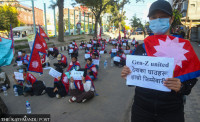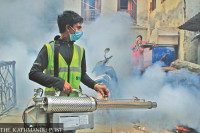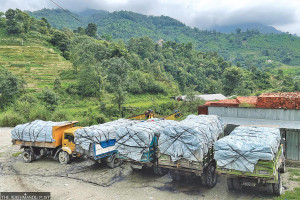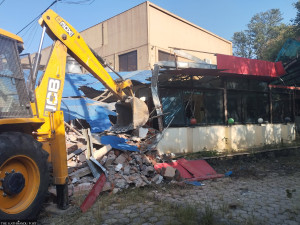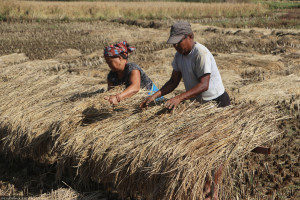Kathmandu
Make Kalanki-Maharajgunj stretch of Ring Road public-centric and environment-friendly, activists demand
Campaigners oppose the road department’s plan to cut over 2,000 trees along the stretch.
Chandan Kumar Mandal
As the government is gearing up to axe down hundreds of trees along the Kalanki-Balaju-Maharajgunj stretch, as part of the Ring Road Expansion Project, activists reminded the government to not repeat the same mistakes it committed during the expansion the Koteshwor-Kalanki section.
Environmentalists, urban planners, students and other campaigners organised a protest along the Ring Road on Thursday evening to press the government to make the new section more public centric than vehicle centric.
The Koteshwor-Kalanki section, which was handed over to the Nepal government by the Chinese government earlier this year, has become infamous for being a killer road inside the Kathmandu Valley. There have been several reports of deaths and injuries along the section since it was opened for operation. The stretch has long been criticised for not being friendly for pedestrians and cyclists.
“We all have seen what happened with the Koteshwor-Kalanki section. It has turned into a killer road. The eight-lane road has a faulty design, and we are worried that authorities will repeat the same again,” said Ratna Shrestha, a cyclist activist and president of the Nepal Cycle Society. “There should be a dedicated bus-lane, a cycle lane and a wide enough footpath for pedestrians.”
Last week, the Department of Road unveiled its plan of chopping down 2,057 trees along the 8.2km Kalanki-Balaju-Maharajgunj road section; however, there is no concrete plan of when the road expansion drive will begin.
Activist criticised the government for hurrying to cut down hundreds of trees for the project especially when the design and initial environmental examination report of the project are not yet been made public.
“I am so surprised that the public was not informed about what is going on here. Why are these trees are being chopped down without any concrete design?” Bindhu Bhandari, a climate change campaigner told the Post. “They are so much in a hurry to cut down the trees. As a climate change campaigner, I am concerned about how much carbon these trees capture. They are not just the trees but the lungs of the ring road.”
During an hour-long protest, participants were seen hugging the trees; some were standing with banners saying they were not against the development but haphazard development that ignores the environment and public safety.
According to Nivesh Dugar, an environmental engineer, one tree can absorb 22kgs of carbon dioxide and provide nearly 55kgs of oxygen in return in a year.
“Two trees can produce enough oxygen for a family of four members. For urban areas like Kathmandu valley, where there are only fewer trees now, these trees are valuable as they can provide shades and also help in cooling down the temperature,” said Dugar. “Even if we can save 1,500 trees, it will be a big save for all of us.”
Although the government has said that they will be planting the same number of trees that are being cut down, activists express doubt over such claims. As part of the nationwide plantation drive, tree plantation was launched along the Koteshwor-Kalanki stretch, but saplings had started dying in the absence of proper care.
“We saw how massively trees were felled last time. There are always false hopes that the government will plant more trees,” said Abhishek Shrestha, an environmental campaigner. “The trees that were cut down in 2013 were planted only in 2019. If they plan to plant trees, they should immediately start planting along the stretch so that by the time project concludes, there will be mature trees in the area.”




 19.12°C Kathmandu
19.12°C Kathmandu



